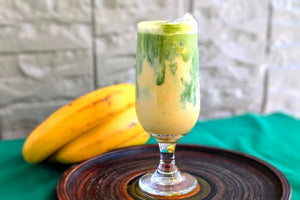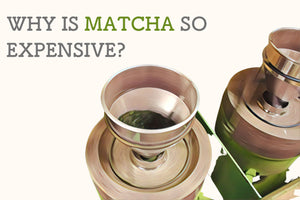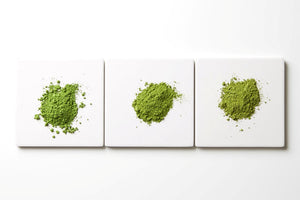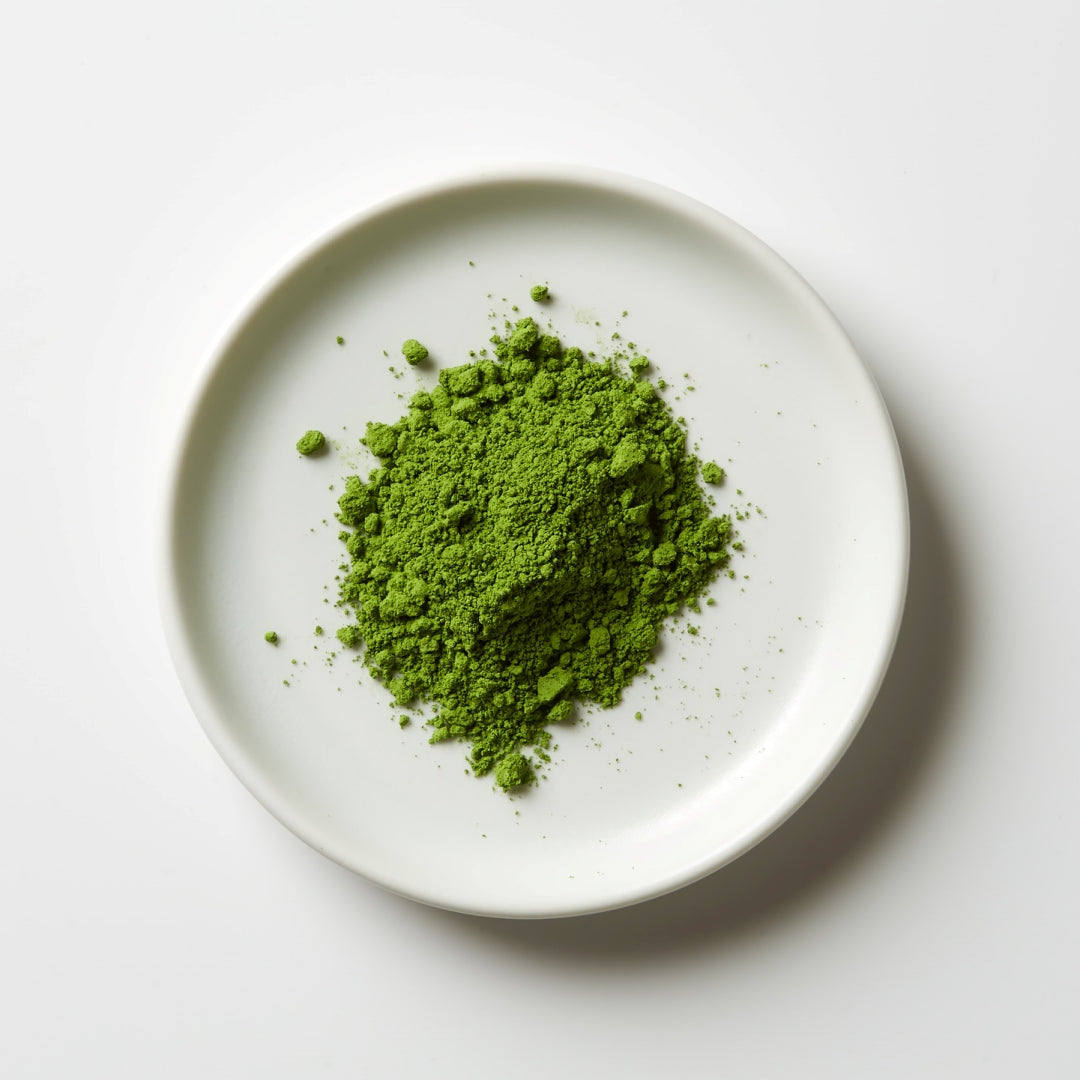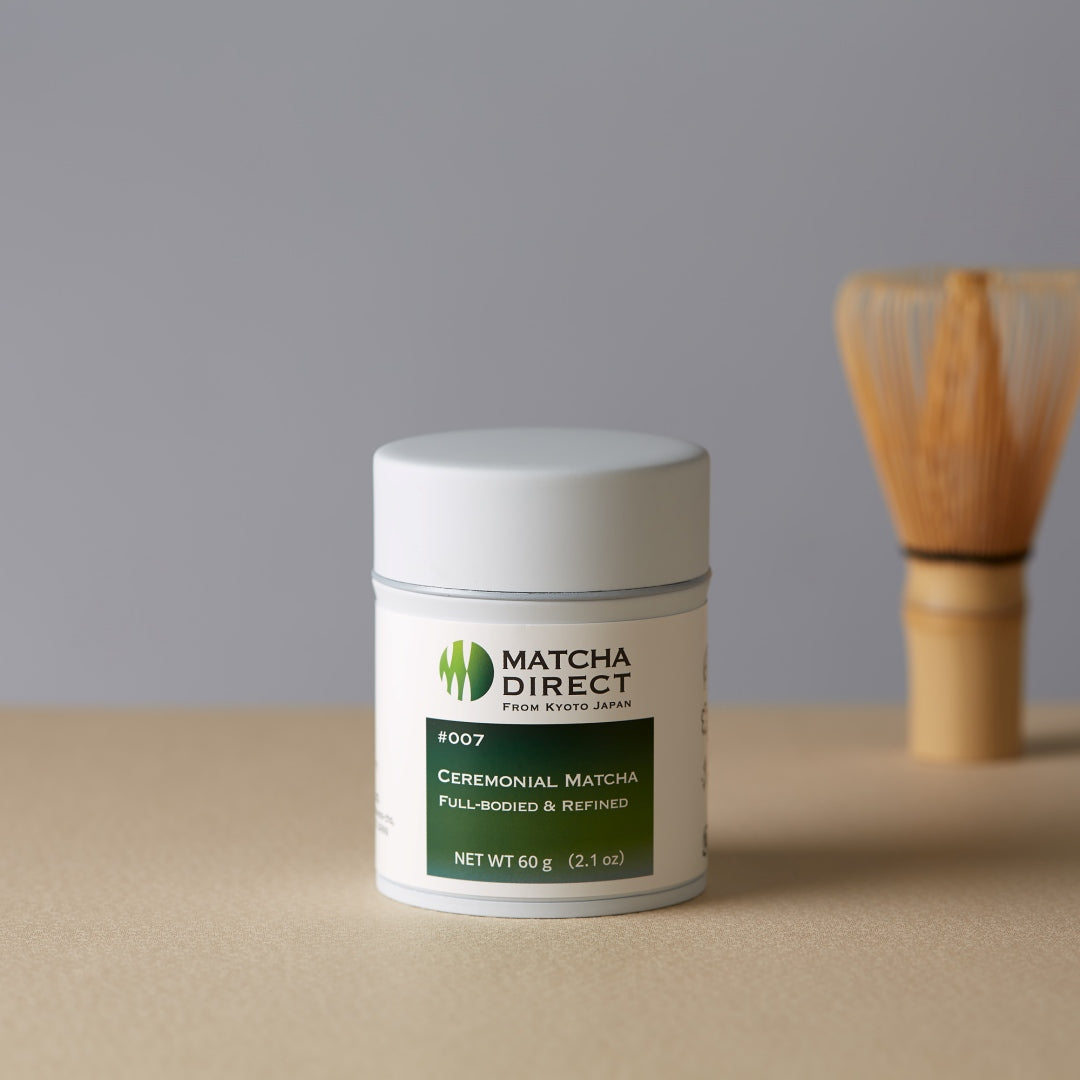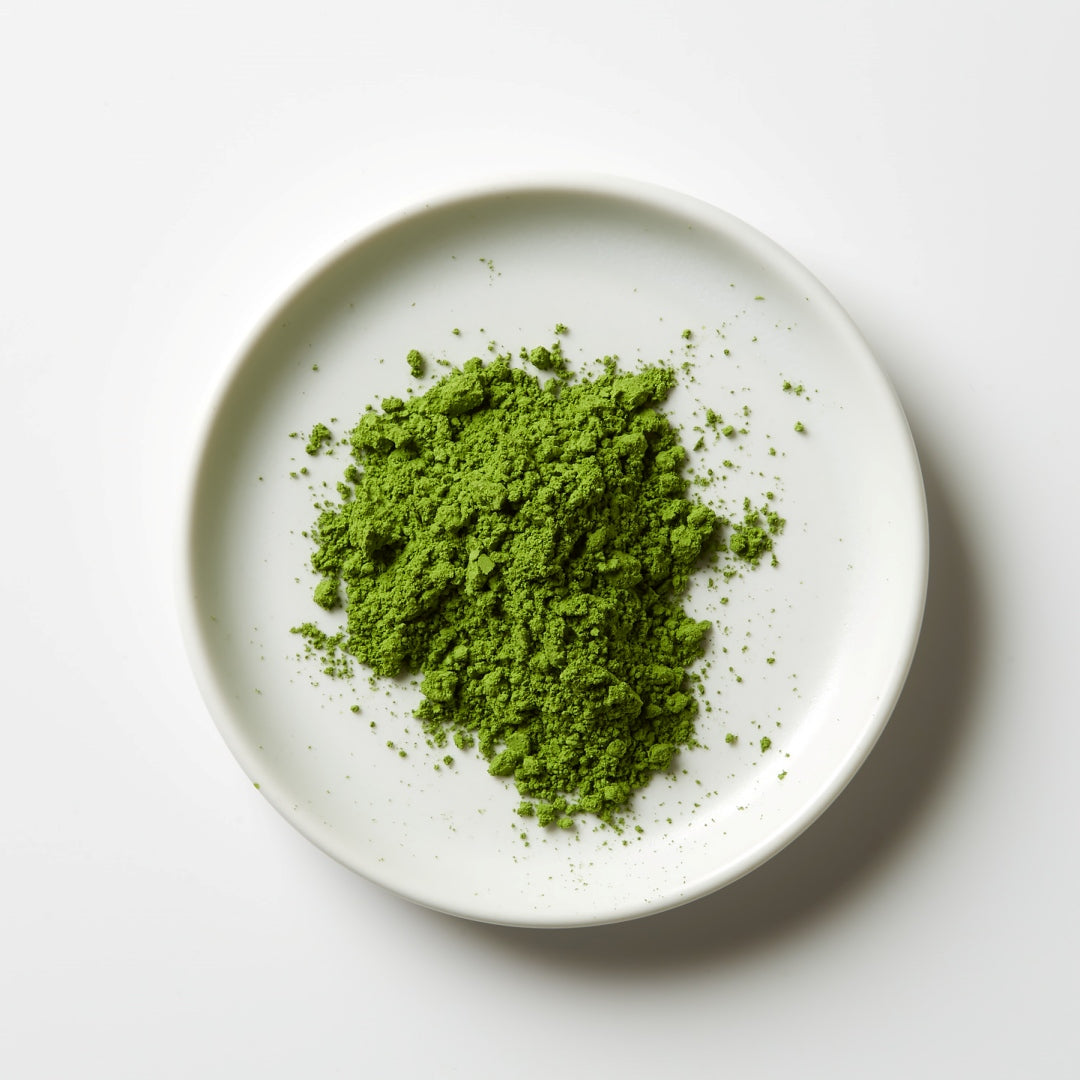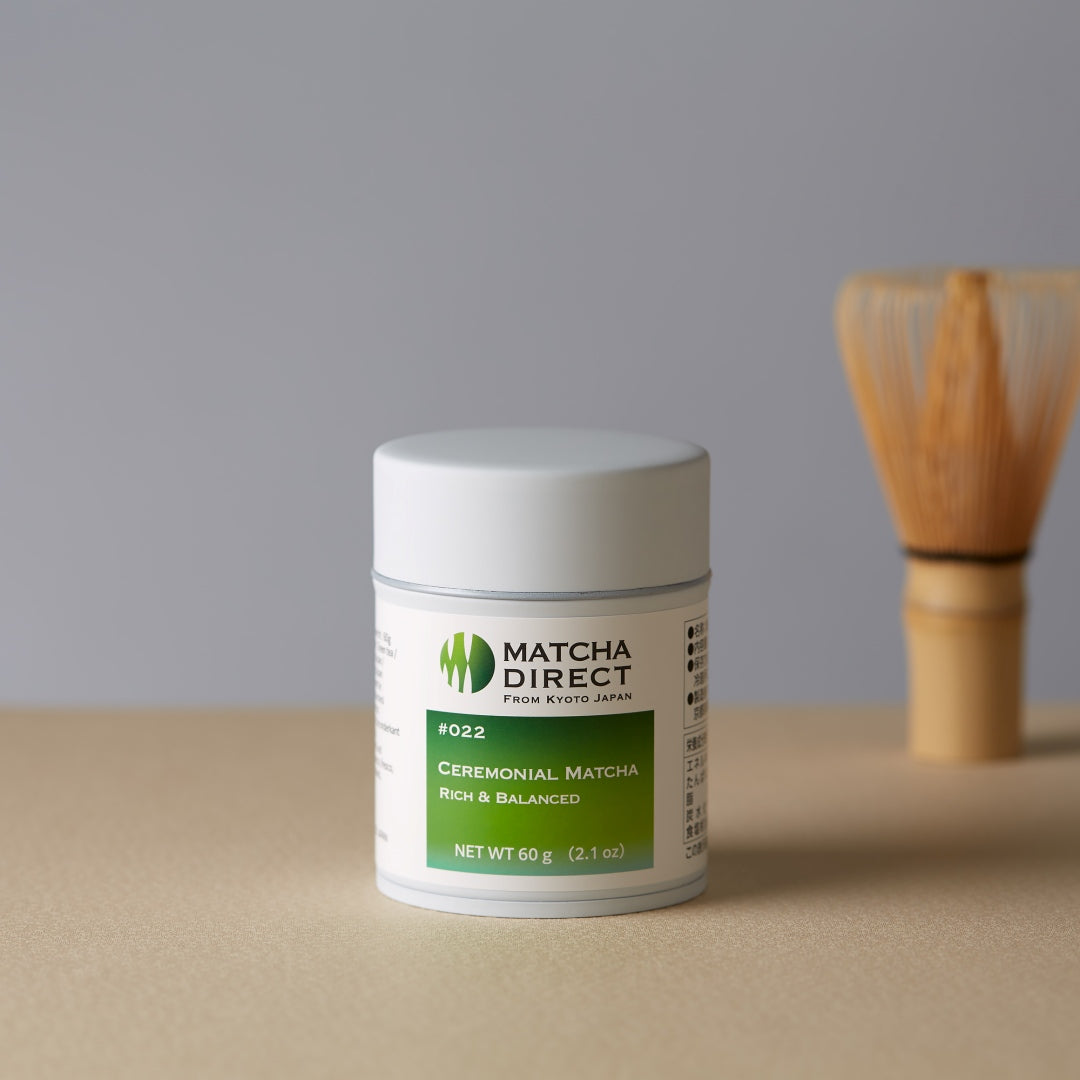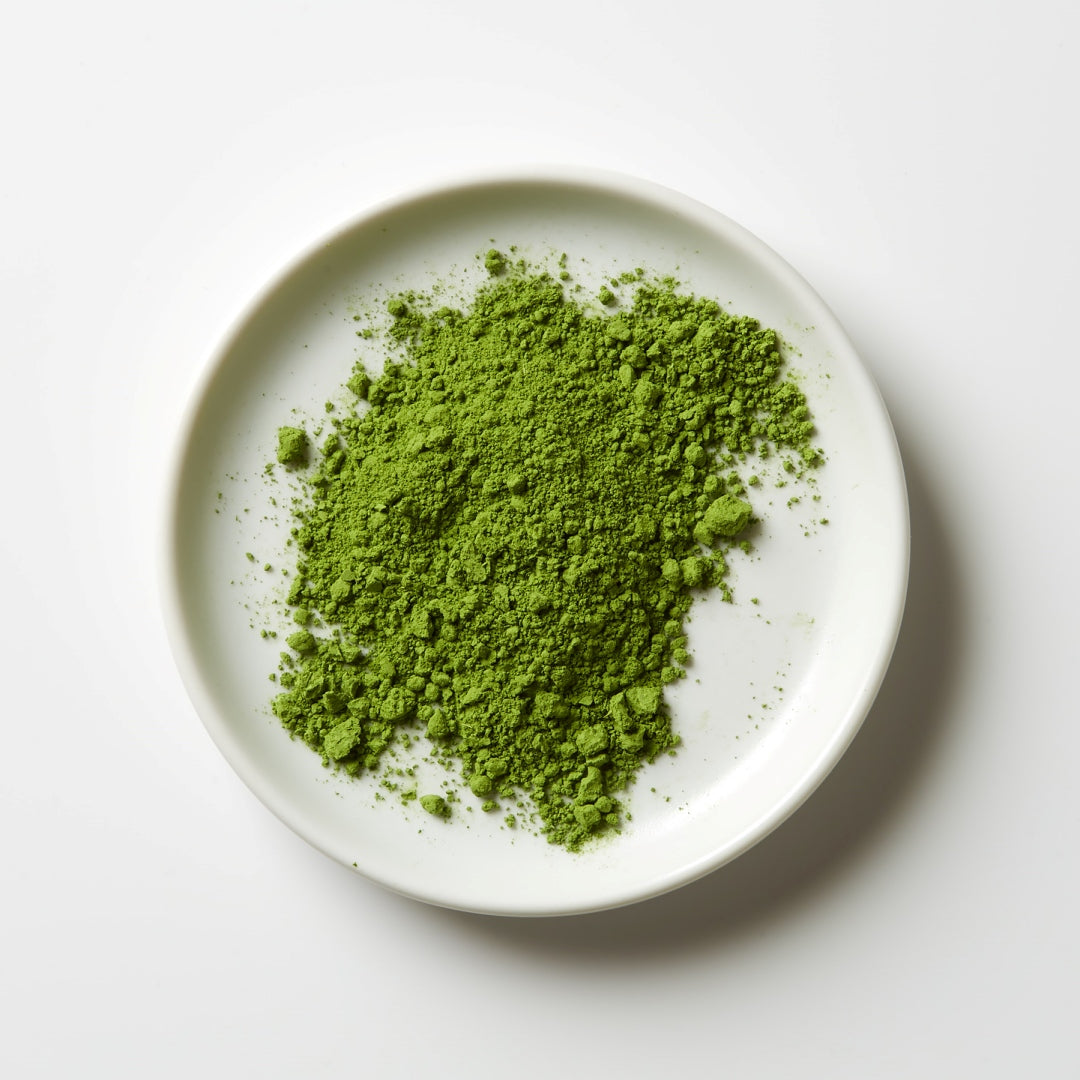Why is Matcha Color Important? Matcha Green Color is the Key to Determining Quality
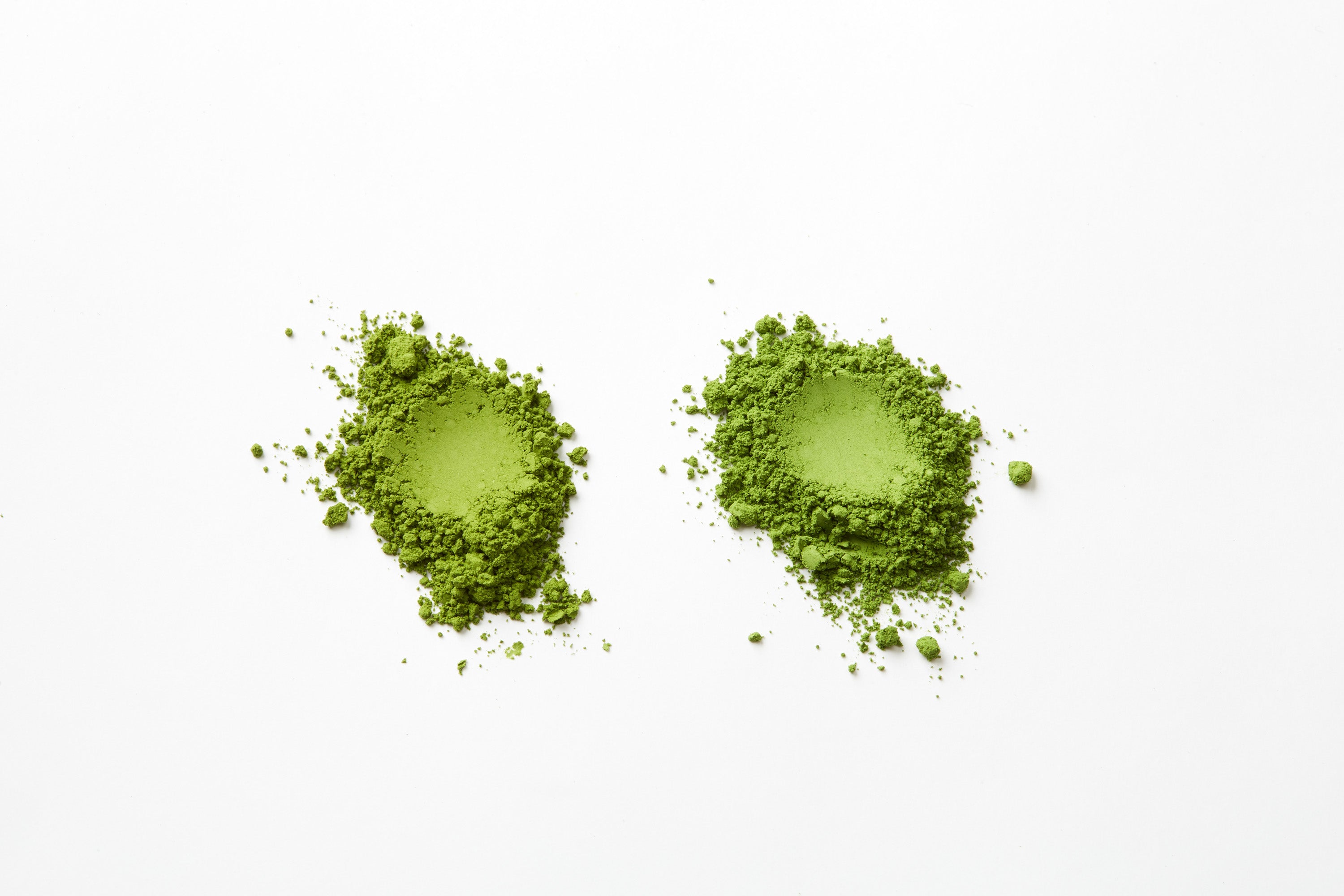
Why is the color of matcha important? It's because the quality of the green color of matcha becomes a key factor in determining the quality of the matcha itself.
If the green color is vibrant, it is generally considered to be of good quality.
On the other hand, matcha with a hint of yellow is often regarded as lower in quality.
However, before applying this concept, let’s take a look at the secret of matcha color.
The Vibrant Matcha Green Color Due to Chlorophyll
The vibrant color of matcha depends on the amount of chlorophyll contained in the tea leaves.
Chlorophyll is the green pigment necessary for plants to perform photosynthesis, and the more chlorophyll there is, the more vibrantly green the leaves will grow.
So, what factors lead to more chlorophyll?
The key is “shaded cultivation” process used in growing matcha.
Shaded cultivation refers to the cultivation method of covering the entire tea tree for more about 20 days just before harvest.
The tea tree, in order to survive, needs to perform photosynthesis with a limited amount of light, and thus increases chlorophyll, resulting in vibrant green leaves.
This is the basic method of cultivating Tencha, the raw material for matcha.
Interestingly, this cultivation method also has another effect.
It suppresses the transformation of L-Theanine into catechins due to reduced photosynthesis.
L-Theanine is a type of amino acid that forms the umami and sweetness of matcha.
In general, the more effective the shaded cultivation, the more it leads to an increase in chlorophyll and L-Theanine, producing leaves that are deeply green, with umami and sweetness.
Matcha made from such leaves, with its vibrant green color and rich flavor, is highly valued and traded at high prices.
On the other hand, matcha that is a little yellowish due to lower chlorophyll content is sold at relatively low prices.
However, let's be clear that this does not mean that the latter matcha is poor in quality.
There is a variety of matcha grades, and depending on the intended use, a variety of products are available.
The range for use in tea ceremonies is sold as ceremonial grade.
On the other hand, cheaper ones may be sold as culinary grade.
Culinary grade matcha may be a bit more yellow than ceremonial grade, but that does not mean it is lower in quality.
If it's freshly made, regardless of the grade, the taste of matcha, although bitter, can be refreshingly delicious.
Therefore, it is not desirable to uniformly judge yellowish matcha as low-quality.
There are various ways to enjoy matcha, and lower-grade matcha is not something to be sneered at by some high-end matcha connoisseurs.
However, there are also yellowish matchas that can definitively be said to be of lower quality.
The Matcha Green Color Changes Over Time From Its Production
The chlorophyll content changes over time since the matcha was ground.
Because matcha is a micro-powder with a large surface area, it tends to cause a relatively significant color change compared to sencha (a type of green tea).
This change is referred to as the 'fading' of matcha.
The green color gradually fades and the matcha takes on a slightly yellowish color.
During the storage period of matcha, various chemical reactions occur within, not only affecting the color but also other aspects.
The aroma changes to a somewhat dusty smell, significantly different from the fresh scent when it was just ground.
As for the taste, it might be described as unpleasant. Over time, an aftertaste that wasn't present in fresh-ground matcha begins to emerge, featuring undesired bitterness and off-flavors.
Such changes in flavor occur proportionally with the color changes. (The change in flavor is even greater than the change in color.)
Therefore, matcha that has faded to a yellowish color, due to the passage of time since its production, loses its original flavor.
This change in quality is distinctly inferior and differs from the grade variations mentioned earlier. After all, it's merely a case of being old.
So, to summarize:
- Yellowish matcha without off-flavors or weird tastes > Variation in grade
- Yellowish matcha with off-flavors or weird tastes > Simply old
Please don't confuse these two phenomenon.
As for the former, you probably purchased it knowing the grade, so you're unlikely to feel uncomfortable with the quality.
Even if it's slightly yellow, as long as it's not old since its production, you can still enjoy its bitter yet clean and delicious taste. After all, that's the nature of matcha.
However, if you feel dissatisfied with the yellowish matcha, or if you feel a gap from what you expected when purchasing, it might be simply an old matcha or imply an issue with the matcha's distribution.
In the food industry, it's quite normal for the flavor to slowly degrade from its production point.
Because matcha has fine particles and a large surface area, as mentioned earlier, this change is significantly prominent.
Ultimately, to enjoy matcha, it's preferable to choose one that's not too far from its production date or one that's been kept at refrigerated temperatures during distribution.
Why is the Matcha Green Color So Important?
The color of matcha is an indicator of its overall quality.
Matcha that's moved away from its vibrant green color and turned slightly yellow indicates either:
- A variation in grade
- Aging since production
The yellowing due to grade differences is acceptable.
Especially when using matcha in sweets or dishes, if the matcha is too high-grade, it may lose its flavor against other ingredients. In such cases, choosing a culinary grade matcha is not a bad decision at all.
On the other hand, unknowingly using old matcha is wasteful.
Even if you purchased the higher-grade ceremonial matcha, if it's old from its production, you'd end up choosing something no different from the cheaper grades.
Originally, matcha, even with grade differences, is chosen for specific uses, and it doesn't mean that lower grades are less delicious.
Yellowish matcha that isn't delicious is likely old from production.
Previously, if you were purchasing Japanese matcha from outside Japan, you could only obtain old matcha. Nowadays, services are available where Japanese matcha sellers directly sell matcha to customers outside Japan via air mail.
Our Matcha Direct is one such service.
We pride ourselves on offering a unique service unlike any other, focusing on grinding the matcha after receiving an order.
If you're interested in the freshness of matcha, please give it a try. We promise to deliver ultra-fresh matcha directly to you.


